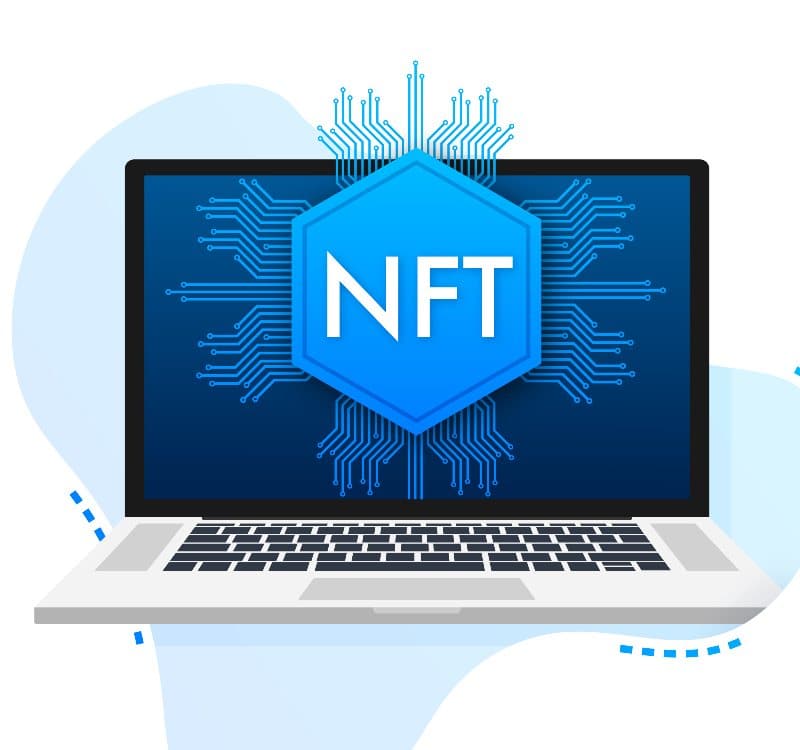Over the last decade, the rise of blockchain and smart contract-based platforms has begun to shape what is now being called Web 3.0. In this scenario Etheruem and Polygon play an important role.
Ethereum, the current leader
Others often throw around terms like metaverse, but the basic vision is the same: a multitude of digital platforms, services, and worlds that interconnect and can move data and value between each other. Currently, there are many competing projects attempting to develop blockchains that will be able to realize such a future.
Ethereum stands as the current leader of the pack. And no matter how they try, competitors have failed to knock Ethereum from its throne. However, Ethereum, in its current form, isn’t ready for prime time. Fortunately, scaling solutions such as Polygon already exist and are maturing to a point where Ethereum can realistically handle whatever Web 3 chucks at it. The collaboration between Polygon and Ethereum solidifies Ethereum as the only choice for DeFi and NFT development.
The current state of Ethereum
There’s a lot of reasons to continue to have faith in Ethereum’s position at the head of the DeFi pack. For one, it remains the second-largest cryptocurrency by market capitalization and, based on current trends, that doesn’t look to be changing anytime soon. The majority of decentralized exchanges, decentralized apps (dapps), and blockchain-based video games also leverage Ethereum’s global network. In fact, the ethereum network boasts 7 of the top 10 dapps deployed in the entire ecosystem right now, with several also leveraging Polygon to avoid gas fees and increase throughput.
Then there’s the fact that since Ethereum has been around so much longer than many of its competitors, it is generally more trusted and understood and boasts far more quality developers. After all, Ethereum has been time-tested with high volume from popular platforms and has always come out the other side.
Furthermore, with the coming upgrades to Ethereum 2.0, there’s only more reason to be optimistic. Switching from Proof-of-Work (PoW) to Proof-of-Stake (PoS) will not only speed up the network but also remove the notable carbon footprint that other networks, like Bitcoin, struggle with. On top of this, a process called “sharding” will split each block into 64 shards that can be validated in parallel, which will massively improve the speed and scalability of the system.
Ethereum 2.0 hasn’t fully rolled out just yet, though progress is quickly being made. For the time being, gas prices can get quite high during heavy traffic, and this can, in turn, have problematic effects on popular dapps and decentralized exchanges. When fees spike, it can eat heavily into the profits of liquidity pools and yield farming services, which form much of the backbone of the DeFi ecosystem. Fortunately, while we wait for Ethereum to upgrade, there’s already a fix for all of this today.

Polygon makes DeFi and NFTs work right now
Enter Polygon. Polygon is what is known as a “Layer 2 Solution,” also referred to as a “Sidechain.” In essence, Polygon is a separate blockchain designed to interact with Ethereum and take much of the transactional pressure off of the main chain. This means transactions can occur on Polygon but still ultimately be settled on Ethereum, maintaining security but massively improving throughput and reducing fees. Whereas Ethereum has a cap of ~300,000 transactions per day, Polygon has a consistent average of 7M transactions processed per day.
Moreover, as the first mover, pioneering both the DeFi and NFT sectors, NFTs on Ethereum are often seen as far more prestigious and, as a result, are often more valuable than offerings from competitor chains. This is evidenced by the fact that nearly all of the most expensive NFTs ever sold exist on Ethereum. Now, Polygon is helping share the load from the resulting NFT boom by reducing gas fees to ensure barriers to entry remain low. Over 1000+ Dapps have already been deployed on Polygon’s main network, including DeFi dapps Aave, Curve, Sushiswap, Pool together, and NFT platform Opensea.
Polygon isn’t just another chain; it’s a protocol for deploying new chains as needed. This means it is scalable more or less indefinitely, and by extension, Ethereum scales too. What’s more, is that all of these scaling benefits will compound the scaling on the Ethereum mainnet. The more Ethereum speeds up, the more Polygon enhances that.
Additionally, Polygon also offers developers an SDK that lets them deploy their own custom chains for a variety of applications that will be fully compatible with both Polygon and Ethereum. The potential here to accelerate the creation and expansion of new services is formidable, as now new projects won’t need to reinvent the wheel to get these benefits.
Polygon and Ethereum vs other blockchains
Some other powerful benefits of Polygon include the fact that these sidechains can be designed to act as bridges to other blockchains. This means that competing smart contract platforms like Solana or Flow can effectively be “tapped into” via the Ethereum blockchain, bringing them in as part of the ecosystem. While likely a way off, this level of interoperability would help bring visions of a singular Web 3 and metaverse to fruition.
While Polygon’s focus appears to be fixed on scaling Ethereum for the foreseeable future, competitor chains will no doubt be clamoring to be sidechained by the project themselves, especially as the industry as a whole enjoys greater adoption.
Flow, for example, uses smart contract language Cadence to provide developers with scalability. However, this remains a barrier of entry for most since they have to learn a relatively extraneous coding language. Polygon, meanwhile, only requires the developer to switch their RPC to the Polygon mainnet or testnet in order to provide developers with scalability, composability, and interoperability.
Polygon essentially allows developers to do what they would’ve been able to do on Cadence with much lower difficulty. In addition, Polygon has an entire suite of SDKs, chains, and rollups to allow developers to highly customize the scalability solution that their dApp uses.
Similarly, the Algorand ecosystem is not as diverse as Polygon’s, with fewer dapps, less top-tier DeFi building blocks, data oracle, and NFT infrastructure. It is not Ethereum compatible, nor does it inherit the security guarantees of the Ethereum main chain. On the other hand, Polygon is perfectly interoperable, composable, and scalable as an Ethereum-based commit-chain.
Polygon also has 1000+ DeFi legos, data oracles, NFT, and decentralized data storage infrastructure deployed in its ecosystem. As of the time of writing, Polygon has almost 200x the amount of network transaction traffic as Algorand (50,000 blocks per day vs. 100,000,000) and 2.4 seconds faster block time (4.4s vs. 2s). The average transaction cost is also lower by ~25% ($0.002 vs. $0.0015). Therefore, Polygon has an edge in both its usability and its ecosystem, in addition to its security guarantees.
The industry is already taking note
These potentials are hardly theoretical either; it is already happening. Polygon has 600+ more gaming and NFT dapps than any other chain outside of Ethereum. Furthermore, the amount of Daily Active Users on Polygon is higher than any other blockchain, including Ethereum. Then there is the fact that multiple developing virtual worlds, such as Decentraland, the Sandbox, and more, are already Polygon compatible, as are top DeFi services like Aave and Balancer.
Taking all of these points together makes a hard case that the coming metaverse may already have its backbone in place. While other projects stand to become part of an ever more diverse ecosystem, it seems plausible that the Ethereum blockchain, in tandem with Polygon, will become the largest factor in the web 3.0 evolution. There is still work to be done, but the roots are in place, as are the mechanisms for scaling, and maybe most important, a thriving community. There could always be upsets, as the future is uncertain, but from here, it doesn’t look like Ethereum’s global computer is going away anytime soon.
The post Ethereum and Polygon have already won the war for Web 3.0 appeared first on The Cryptonomist.






















